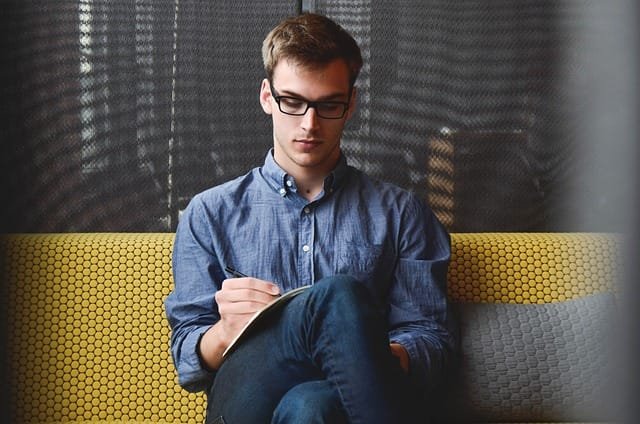This Article has been revised, edited and added to, by Poulomi Chakraborty.
- What is A/B Testing?
- A/B Testing and User Experience (UX)
- Interpreting A/B Testing Results
- How A/B Testing Influences SEO
- A/B Testing Tools and Platforms
- Advanced A/B Testing Considerations for UX and SEO
- Multivariate Testing: A Step Beyond A/B
- Segment-Specific Testing
- Mobile UX and Its SEO Implications
- Continuous Testing and Iterative Improvement
- Elevating A/B Testing Strategies for Comprehensive Impact
- The Intersection of UX Design and SEO Strategy
- Enhancing Content Strategy with Advanced Testing
- Technical SEO and Site Performance Optimization
- Strategic Implementation for Long-Term Success
- Beyond Testing to Transformation
- Best Practices for Combining UX and SEO Objectives
- Holistic Design and Content Choices
- Speed and Performance Testing
- Accessible and Inclusive Design
- Crafting a Unified Strategy for User and Search Engine Success
- Leveraging Data-Driven Insights for Informed Decision Making
- Optimizing Site Architecture for Users and Search Engines
- Enhancing Content Strategy for Dual Objectives
- Prioritizing Technical SEO to Boost UX
- A Harmonious Approach to UX and SEO
- Conclusion: Mastering A/B Testing for Holistic Growth
In the realm of digital optimization, A/B testing stands out as a critical tool to refine user experience (UX) and bolster search engine optimization (SEO) efforts. Through controlled experiments and data-driven insights, businesses can craft web experiences that resonate with users while appealing to search engine algorithms. Let’s delve into the intricate dance of A/B testing, its intersection with UX, and its overarching impact on SEO.
What is A/B Testing?

At its core, A/B testing, sometimes known as split testing, involves comparing two versions of a web page or app to determine which performs better concerning a predetermined metric. This could be anything from click-through rates (CTR) to conversion rates or time spent on a page.
Why is A/B Testing Important?
Data-driven Decisions: Instead of relying on intuition or subjective preferences, A/B testing allows decisions to be grounded in actual user behavior.
Risk Mitigation: By testing changes on a smaller audience before a full-scale rollout, businesses can avoid potentially costly mistakes or missteps.
Incremental Improvements: Over time, multiple rounds of A/B testing can lead to significant improvements in user experience and website performance.
The Strategic Value of A/B Testing in Startup Growth
For startups, the digital landscape presents both a battleground and a playground. In this dynamic environment, A/B testing emerges not just as a tool but as a strategic ally. It’s about making informed decisions that can pivot a startup from being a mere participant to a dominant player in the market. A/B testing offers a path to understand your audience deeply and adapt to their needs and preferences, a crucial advantage in the fast-paced startup world.
Understanding A/B Testing: Beyond the Basics
At its essence, A/B testing involves presenting two variants of a digital asset to a similar audience at the same time, to determine which variant drives better performance based on specific metrics. However, to leverage A/B testing effectively, it’s vital to recognize its nuances and the strategic depth it offers.
Crafting a Culture of Data-driven Innovation
Startups thrive on innovation, but not all innovations yield positive outcomes. A/B testing stands as a guardrail against untested assumptions, ensuring that each innovation, whether it’s a new feature, a design tweak, or a content adjustment, contributes positively towards the startup’s objectives. Embedding A/B testing into the innovation process empowers startups to foster a culture where every decision is backed by data, significantly reducing the risks associated with innovation.
Strategic Implementation for Long-term Growth
The application of A/B testing goes beyond isolated experiments. It should be seen as a continuous strategy that guides the evolution of your startup’s digital assets. Strategic implementation involves:
- Identifying Key Performance Indicators (KPIs): Start with a clear understanding of your startup’s goals and how they translate into actionable KPIs. Whether it’s improving user engagement, increasing conversions, or reducing bounce rates, each A/B test should be directly linked to these indicators.
- Prioritizing User Experience: Every test should aim to uncover insights that enhance the user experience (UX). Improved UX leads to higher satisfaction, fostering loyalty and encouraging word-of-mouth referrals, which are invaluable for startups.
- Balancing Speed with Precision: In the fast-moving startup environment, agility is key. However, when it comes to A/B testing, rushing through the process can lead to inaccurate conclusions. Startups must balance the need for quick decisions with the requirement for precise, reliable testing outcomes.
Advanced A/B Testing Strategies for Startups
To truly harness the power of A/B testing, startups should consider advanced strategies that go beyond simple webpage comparisons. These include:
- Dynamic Content Testing: Experiment with different types of content, from video to interactive elements, to see what resonates most with your audience. This can reveal unexpected preferences and behaviors, guiding content strategy in a data-driven direction.
- Segmentation and Personalization: Conduct A/B tests on different segments of your audience to uncover nuanced preferences. Personalization based on these insights can dramatically improve engagement and conversion rates.
- Longitudinal Testing: Instead of one-off tests, engage in continuous testing over time to understand how changes impact user behavior in the long term. This approach can reveal trends and shifts in preferences, enabling startups to stay ahead of the curve.
Integrating A/B Testing with Other Data Sources
For a holistic view, A/B testing should be part of a broader data analysis strategy. Integrating its findings with insights from analytics platforms, customer feedback, and market research can paint a comprehensive picture of user behavior and preferences. This integrated approach ensures that decisions are not made in a vacuum but are informed by a wide array of data points.
Embedding A/B Testing into Your Startup’s DNA
A/B testing is more than a tool; it’s a mindset. By embedding A/B testing into the very fabric of your startup’s decision-making process, you can ensure that your venture remains adaptable, resilient, and always aligned with the needs of your users. In the competitive startup ecosystem, this strategic approach to A/B testing can be the difference between thriving and merely surviving.
A/B Testing and User Experience (UX)

Identifying UX Pain Points
Before diving into testing, it’s crucial to pinpoint what elements of a webpage or app might be hindering the user experience.
User Surveys: Engage your audience directly. Feedback can provide invaluable insights into areas of friction or dissatisfaction.
Heatmaps: Tools like Crazy Egg offer visual representations of where users click, move, or scroll on a page, highlighting areas of interest or potential confusion.
Crafting A/B Test Hypotheses
Once you’ve identified potential UX issues, the next step is to form hypotheses on how to address them.
Clear Problem Statement: Define the specific issue you’re aiming to solve. For example, “Users are abandoning the checkout process before completing their purchase.”
Proposed Solution: Suggest a clear intervention. “By simplifying the checkout process and reducing the number of steps, users will be more likely to complete their purchase.”
Implementing the Test
Control vs. Variant: The original version (as it exists without changes) is the ‘control,’ while the modified version is the ‘variant.’ Users are randomly served one of the two versions.
Ensuring Statistical Significance: This involves having a sufficiently large sample size and ensuring that observed differences between the control and variant are not due to random chance.
Duration of Test: While it’s tempting to conclude a test as soon as a winner emerges, it’s essential to run it for a predetermined period to account for external factors like day of the week or time of day.
Enhancing the User Journey Through A/B Testing
The intersection of A/B testing and user experience (UX) represents a pivotal area for startups looking to carve out a niche in the digital ecosystem. It’s a process that demands a deep understanding of your user’s journey, from the initial interaction to the ultimate conversion or desired action. By integrating A/B testing into the UX design process, startups can create more engaging, intuitive, and satisfying experiences for their users.
The Role of Empathy in A/B Testing
Understanding User Motivations
At the heart of every successful A/B test is a profound understanding of user motivations. What drives your users to choose your product or service over another? Is it the ease of use, the aesthetic appeal, or the perceived value? By putting yourself in the shoes of your users and employing empathy, you can design tests that not only reveal which elements perform better but also why certain elements resonate more with your audience.
Leveraging Emotional Insights
Emotions play a crucial role in decision-making. A/B testing can help you understand the emotional triggers that lead to conversions or drop-offs. By experimenting with different messaging, imagery, and design elements, you can uncover the emotional appeals that most effectively engage your users. This insight allows for the creation of a UX that not only meets the practical needs of the users but also connects with them on an emotional level.
Integrating A/B Testing with UX Design Principles
The Principle of Simplicity
One of the fundamental principles of UX design is simplicity. Users should be able to navigate your website or app effortlessly, without encountering unnecessary complexities. A/B testing can be strategically used to streamline the user experience, testing various layouts, navigation structures, and content arrangements to identify the most intuitive and straightforward design.
Consistency Across Touchpoints
Consistency in design and messaging reassures users and enhances their experience. A/B testing different aspects of your UX across multiple touchpoints can ensure that your brand’s voice, tone, and visual identity are coherent and consistent. This uniformity builds trust and familiarity, which are crucial for fostering long-term user relationships.
Crafting a Feedback Loop
Real-time User Feedback
Incorporating real-time feedback mechanisms into your A/B tests, such as surveys or feedback forms, can provide immediate insights into user preferences and pain points. This direct line of communication allows startups to quickly iterate on design choices and content, ensuring that the user experience is always evolving in response to user feedback.
The Iterative Process of Improvement
A/B testing is not a one-off task but an ongoing process of refinement. Each test should build on the learnings of the previous ones, creating a continuous cycle of testing, learning, and improving. This iterative approach ensures that the UX is always aligned with user expectations and is responsive to changing behaviors and trends.
A/B Testing as a Catalyst for UX Excellence
In the digital age, the user experience is paramount. A/B testing serves as a powerful tool for startups to enhance their UX, making informed decisions that are grounded in real user data. By approaching A/B testing with strategic intent, empathy, and an understanding of design principles, startups can create digital products that not only meet the needs of their users but delight and retain them. This commitment to UX excellence, powered by the insights gained from A/B testing, can set a startup on the path to success in the competitive digital marketplace.
Interpreting A/B Testing Results

Evaluating the Outcome
Once an A/B test concludes, the gathered data provides insights into user preferences and behaviors. But interpreting these results requires a careful approach.
Understanding Metrics: Dive into the metrics you set out to improve, whether it’s conversion rates, bounce rates, or average session duration. Examine the performance of both the control and variant.
Statistical Confidence: Ensure that the results achieve a sufficient confidence level, typically 95% or higher. This ensures that the observed changes aren’t merely a result of random fluctuations.
Consider External Factors: Remember to account for external influences that might have skewed the results, like holidays, promotions, or significant news events.
Drawing Actionable Insights
Go Beyond Surface-Level Data: Delve deeper into segment-specific behaviors. For instance, did a particular age group or geographical segment respond differently to the variant?
Iterative Testing: Just because one test yields a certain result doesn’t mean there isn’t room for further optimization. Always consider subsequent A/B tests based on previous insights.
Navigating the Data Landscape
The culmination of an A/B testing cycle is a rich dataset that holds the keys to user preferences, behaviors, and potential UX optimizations. However, the true challenge lies in decoding this dataset to extract actionable insights. For startup founders, interpreting A/B testing results is a critical step in the decision-making process that can significantly impact the trajectory of their product development and marketing strategies.
Beyond the Numbers: Qualitative Insights
The Story Behind the Data
While quantitative data from A/B testing provides a clear view of which variant performed better, integrating qualitative insights can illuminate the reasons behind user behaviors. Comments from user surveys, feedback forms, and usability tests can offer valuable context that numbers alone cannot. This combination of quantitative and qualitative data enables a more holistic view of the user experience, guiding more nuanced and effective improvements.
Identifying Patterns and Anomalies
Data from A/B testing often reveals patterns that point to broader user experience trends. However, anomalies in the data can also be incredibly insightful. These outliers may indicate a segment of your audience with unique needs or unexpected responses to your testing variables. Paying attention to these anomalies can uncover opportunities for innovation or highlight areas requiring further investigation.
Strategic Application of Insights
Prioritizing Actionable Outcomes
Once the data has been thoroughly analyzed, the focus shifts to prioritizing actionable outcomes. Not all findings will carry the same weight for your startup’s objectives. It’s essential to distinguish between changes that can lead to significant improvements in user engagement or conversion rates and those with a marginal impact. This prioritization ensures that resources are allocated efficiently, focusing on initiatives that offer the highest return on investment.
Bridging the Gap Between UX and Business Goals
The insights gained from A/B testing should not only serve to enhance the user experience but also align with broader business goals. Whether it’s increasing sales, boosting user retention, or reducing customer service inquiries, each insight should be evaluated through the lens of your startup’s strategic objectives. This alignment ensures that UX improvements directly contribute to the growth and success of the business.
Continuous Learning and Evolution
The Foundation for Future Tests
Interpreting the results of an A/B test is not the final step but rather the foundation for future tests. Each round of testing should inform and refine the next, creating a cycle of continuous improvement and learning. This iterative process allows startups to remain agile, adapting to changing user needs and market dynamics while steadily optimizing their digital assets.
Cultivating a Data-Informed Culture
Embedding the practice of data-driven decision-making into the fabric of your startup fosters a culture of evidence-based innovation. Encouraging team members to engage with A/B testing results and contribute to the interpretation process can demystify data analytics and empower a more informed approach to product development and marketing strategies.
Turning Insights into Impact
Interpreting A/B testing results is a critical competency for startup founders, offering a direct line of sight into the preferences and behaviors of their user base. By combining quantitative data with qualitative insights, prioritizing actionable outcomes, and adopting an iterative approach to testing, startups can ensure that every decision is rooted in evidence. This strategic application of A/B testing insights not only enhances the user experience but also drives business growth, positioning startups for success in the competitive digital marketplace.
How A/B Testing Influences SEO

While the primary goal of A/B testing often revolves around improving UX, its results can also have significant implications for SEO.
Direct SEO Impacts
Bounce Rate: If A/B testing reveals that a variant decreases the bounce rate, it could indicate a more engaging page, which can be a positive signal to search engines.
Dwell Time: Improved content readability or layout could lead to users spending more time on your site, another potential positive indicator for SEO.
Click-through Rate (CTR): Tweaking meta titles or descriptions might lead to higher CTRs from search engine results pages (SERPs), potentially influencing rankings.
Indirect SEO Benefits
Improved User Engagement: Enhanced user satisfaction can lead to increased shares, return visits, and brand mentions – all of which can indirectly boost SEO.
Reduced Cart Abandonment: For e-commerce sites, streamlining the checkout process can reduce cart abandonment rates, leading to better sales and possibly improved organic visibility for transactional keywords.
Potential SEO Pitfalls to Avoid
Rapid Changes: Constantly changing a webpage can confuse search engines. It’s crucial to let the ‘winning’ version from an A/B test run for a while to allow search engines to re-crawl and re-index the page.
Splitting Link Equity: If not set up correctly, A/B testing can result in two live versions of a page, potentially diluting link equity. Employ canonical tags or use testing tools that don’t split URLs.
The Synergy Between User Experience and Search Rankings
In the digital age, the importance of SEO in driving organic traffic and improving online visibility cannot be overstated. However, SEO is not just about keywords and backlinks; it’s also deeply intertwined with the user experience (UX). A/B testing, while primarily aimed at enhancing UX, also plays a pivotal role in informing SEO strategies. This section explores the strategic interplay between A/B testing and SEO, offering startup founders actionable insights for leveraging this synergy to their advantage.
Understanding the Impact of UX on SEO
The Role of User Engagement Metrics
Search engines, particularly Google, have evolved to prioritize sites that offer a superior user experience. Metrics such as dwell time, bounce rate, and click-through rate (CTR) are now critical components of search algorithms. By using A/B testing to optimize these user engagement metrics, startups can indirectly influence their SEO performance. For instance, testing different content formats or page layouts to identify what keeps users engaged longer can lead to better search rankings.
Mobile Optimization: A Crucial Factor
With the shift towards mobile-first indexing, Google now uses the mobile version of the content for indexing and ranking. A/B testing that focuses on mobile UX optimizations, such as faster load times, responsive design, and touch-friendly navigation, can significantly improve a site’s SEO. Startups should consider running separate A/B tests for mobile and desktop users to tailor the experience for each audience, thereby enhancing overall SEO.
Strategic A/B Testing for SEO Enhancement
Keyword Optimization Through A/B Testing
While traditional keyword optimization involves incorporating relevant keywords into your content, A/B testing can take this a step further. By testing different variations of title tags, meta descriptions, and content with various keyword strategies, startups can identify which approaches yield the highest CTR from search results. This data-driven approach to keyword optimization ensures that your SEO efforts are aligned with user preferences, potentially boosting your rankings.
Content Quality and Relevance
Search engines favor content that is not only keyword-rich but also valuable and relevant to the user. A/B testing different content formats, lengths, and styles can reveal what type of content resonates most with your audience and leads to higher engagement. Incorporating these insights into your content strategy can improve user satisfaction, a factor that search engines consider when ranking sites.
Navigating SEO Challenges with A/B Testing
Avoiding Common Pitfalls
While A/B testing can have positive SEO implications, there are potential pitfalls to avoid. Rapid, frequent changes to a webpage can confuse search engines, as can running too many tests simultaneously. Startups should plan their A/B testing calendar judiciously, allowing sufficient time between tests for search engines to crawl and index changes. Furthermore, employing canonical tags correctly and ensuring that test variations are not indexed can prevent split link equity and other SEO issues.
Balancing User Experience and SEO Objectives
In the quest to improve UX through A/B testing, it’s crucial not to lose sight of SEO objectives. For example, simplifying a webpage’s design might improve user engagement but could reduce the amount of on-page content, potentially impacting keyword rankings. Startups need to find a balance, ensuring that any changes made to enhance UX also support, or at least do not detract from, SEO goals.
Leveraging A/B Testing for SEO Success
A/B testing is a powerful tool for startups not only to refine UX but also to inform and enhance SEO strategies. By understanding the relationship between user engagement metrics and search rankings, startups can use A/B testing to make informed changes that benefit both users and search performance. Strategic, well-planned A/B tests, informed by both UX and SEO considerations, can lead to a virtuous cycle of improved user engagement and higher organic search visibility, driving long-term growth and success in the digital marketplace.
A/B Testing Tools and Platforms

To effectively carry out A/B tests, leveraging the right tools can make the process seamless and more accurate.
Popular A/B Testing Platforms
Optimizely: Renowned for its user-friendly interface and robust analytics, Optimizely caters to both beginners and seasoned A/B testers.
VWO (Visual Website Optimizer): This platform offers heatmaps, split URL testing, and multivariate testing in addition to classic A/B testing.
Google Optimize: Integrated with Google Analytics, this free tool allows for straightforward A/B tests, multivariate tests, and split URL tests.
Ensuring SEO-friendly A/B Testing
Server-side Testing: Instead of making changes on the client-side (which can be visible to search engines), consider server-side tests where variations are generated before the page is served.
Robots.txt: If you’re testing entirely different URLs, ensure that the variant is disallowed in your robots.txt file to prevent search engines from indexing it.
Choosing the Right A/B Testing Platform for Your Startup
The landscape of A/B testing tools and platforms is vast, with each offering a unique set of features, integrations, and pricing models. For startup founders, selecting the right platform is a critical decision that can significantly impact the efficiency and effectiveness of their A/B testing efforts. This section delves into the strategic considerations founders must weigh when choosing an A/B testing tool, ensuring they select a platform that aligns with their startup’s specific needs and goals.
Strategic Considerations for Tool Selection
Alignment with Business Objectives
Before diving into the features of different A/B testing tools, it’s crucial to clearly understand your startup’s business objectives. Are you focusing on optimizing conversion rates, improving user engagement, or reducing bounce rates? Different tools have strengths in various areas, so aligning the tool’s capabilities with your strategic goals is essential.
Integration Capabilities
In today’s digital ecosystem, your A/B testing tool must seamlessly integrate with other platforms and tools your startup uses, such as web analytics, customer relationship management (CRM) systems, and content management systems (CMS). A platform that offers robust integration capabilities can streamline workflows, enhance data accuracy, and provide a more comprehensive view of your testing efforts’ impact.
Scalability and Flexibility
Startups grow and evolve at a rapid pace, so the A/B testing platform you choose should be able to scale with your business. Consider platforms that offer flexibility in terms of testing capacity, features, and pricing. A tool that fits your needs today but can also accommodate future growth will provide long-term value.
Advanced Features for In-depth Analysis
Multivariate Testing and Segmentation
Beyond basic A/B testing, some platforms offer advanced features such as multivariate testing and user segmentation. These capabilities allow for more complex experiments and the ability to tailor tests to specific user groups, providing deeper insights and more targeted optimization opportunities.
AI and Machine Learning Enhancements
Emerging technologies like AI and machine learning are becoming increasingly integrated into A/B testing platforms. These technologies can automate the analysis of test results, predict testing outcomes, and even recommend test variations. For startups looking to stay on the cutting edge, selecting a platform that invests in these technologies could offer a competitive advantage.
The Importance of User Support and Community
Access to Expertise and Support
The complexity of A/B testing can sometimes be daunting, especially for startups new to the process. A platform that offers robust support through tutorials, customer service, and a community of users can be invaluable. This support can accelerate the learning curve, help troubleshoot issues, and provide inspiration for new tests.
Learning from the Community
Many A/B testing platforms have active communities where users share insights, strategies, and success stories. For startup founders, participating in these communities can offer a wealth of knowledge and networking opportunities. Learning from peers who have faced similar challenges can inform your testing strategies and help avoid common pitfalls.
A Foundation for Informed Decision-Making
Selecting the right A/B testing platform is more than just a technical decision; it’s a strategic one that can influence the trajectory of your startup’s growth. By considering your startup’s specific needs, goals, and the broader digital marketing ecosystem, you can choose a tool that not only facilitates effective A/B testing but also integrates with your overall growth strategy. Remember, the goal of employing an A/B testing tool is to enable data-driven decision-making, fostering a culture of continuous improvement and innovation that drives your startup forward.

Related: Check out our free SEO suite

Advanced A/B Testing Considerations for UX and SEO
Multivariate Testing: A Step Beyond A/B
Definition: Instead of testing just two versions of a page (A and B), multivariate testing assesses multiple changes and their combinations to determine the best-performing elements.
When to Use: Opt for multivariate testing when you’re looking to analyze the performance of different combinations of elements rather than just one element’s change.
Considerations: This method requires more traffic than traditional A/B tests because it’s assessing multiple combinations. If traffic is limited, results might not achieve statistical significance.
Segment-Specific Testing
Tailoring UX for Specific Audiences: All users are not created equal. Different segments may have unique behaviors or preferences. Consider running tests targeted at specific audience segments, such as mobile vs. desktop users or regional segments.
SEO Benefits: Improved UX for specific audience segments can lead to enhanced engagement metrics, indirectly benefiting SEO for those groups.
Mobile UX and Its SEO Implications

Mobile-First Design: With mobile traffic surpassing desktop, optimizing the mobile experience is essential. Mobile-specific A/B tests can help fine-tune elements like button sizes, font readability, and layout.
Impact on Mobile SEO: Google employs a mobile-first indexing approach. Thus, any improvements in mobile UX could directly enhance mobile search rankings.
Continuous Testing and Iterative Improvement
Adopting a Testing Culture: Instead of sporadic tests, cultivate an organizational mindset of continuous testing. Regularly evaluating different elements can lead to cumulative improvements.
Learning from ‘Failures’: Not every test will result in a clear winner or improved metrics. However, even these outcomes offer insights and learnings.
Elevating A/B Testing Strategies for Comprehensive Impact
As startups mature, their approach to A/B testing must evolve to address more complex challenges and opportunities. Advanced A/B testing considerations can significantly enhance both user experience (UX) and search engine optimization (SEO), driving superior outcomes. This section explores deeper layers of strategy, integrating advanced A/B testing considerations with a focus on maximizing the dual objectives of exceptional UX and robust SEO performance.
The Intersection of UX Design and SEO Strategy
Creating Cohesive User Journeys
The user journey encompasses every interaction from initial discovery through conversion and beyond. Advanced A/B testing delves into these interactions, identifying opportunities to create a more cohesive and seamless experience. This includes testing variations in navigation, content delivery, and interactive elements to ensure they not only attract users but also guide them effortlessly towards desired actions, positively affecting both UX and SEO.
Leveraging Behavioral Analytics for Deeper Insights
Integrating behavioral analytics with A/B testing provides a richer understanding of how users interact with your site. Tools that track mouse movements, clicks, and scroll depth can reveal user behavior patterns that are not evident through traditional analytics. These insights can inform more nuanced A/B tests, focusing on areas of the page or elements that significantly impact user engagement and search ranking potential.
Enhancing Content Strategy with Advanced Testing
Semantic Richness and User Intent
Advanced A/B testing for SEO goes beyond keyword optimization, focusing on semantic richness and alignment with user intent. Testing different content structures and formats to better match user queries can improve both UX and SEO. This involves experimenting with long-form versus short-form content, the inclusion of rich media, and the strategic use of related keywords and topics that provide comprehensive answers to user questions.
Interactive and Dynamic Content
Interactive elements, such as quizzes, polls, and calculators, can significantly enhance user engagement. However, their impact on SEO is not always straightforward. Advanced A/B testing can measure the effect of these elements on key SEO metrics like dwell time and bounce rate, providing insights into how dynamic content contributes to overall site performance.
Technical SEO and Site Performance Optimization
Speed and Mobile Usability
In an era where site speed and mobile usability are crucial SEO factors, advanced A/B testing must include technical elements. Experimenting with different image compression techniques, code minification practices, and responsive design layouts can uncover optimizations that significantly improve site performance and, by extension, SEO.
Schema Markup and Structured Data Testing
Structured data markup can enhance search engine understanding and visibility of your content. A/B testing with and without schema markup for articles, products, and reviews can reveal its impact on click-through rates from search results, providing valuable insights into how structured data can be used to improve SEO outcomes.
Strategic Implementation for Long-Term Success
Integrating A/B Testing into Product Development Cycles
For startups looking to sustain growth, integrating A/B testing into regular product development cycles ensures that UX and SEO considerations are not afterthoughts but foundational elements of product strategy. This approach allows for continuous refinement based on user feedback and search performance, fostering a culture of data-driven decision-making.
Building a Feedback Loop with Stakeholders
Effective communication of A/B testing results to stakeholders, including product teams, marketing, and leadership, creates a feedback loop that encourages company-wide engagement with UX and SEO improvements. Sharing successes and learnings fosters a collaborative environment where every team member is invested in optimizing user experience and search visibility.
Beyond Testing to Transformation
Advanced A/B testing is a journey from tactical adjustments to strategic transformation. For startups committed to achieving excellence in UX and SEO, it offers a path to deeply understanding user behavior, refining content strategy, optimizing technical performance, and embedding a culture of continuous improvement. By embracing these advanced considerations, startups can not only adapt to the ever-changing digital landscape but also shape it, setting new standards for user experience and search engine success.
Best Practices for Combining UX and SEO Objectives

Holistic Design and Content Choices
Harmonizing Visual and Functional Elements: Ensure that visual enhancements (like animations or dynamic elements) don’t hinder load times or accessibility, both crucial for SEO.
Content Quality: While testing different content layouts or styles, always prioritize content quality and relevance. Remember that while a design might optimize clicks, content drives engagement.
Speed and Performance Testing
Core Web Vitals: Google’s introduction of Core Web Vitals as ranking factors emphasizes page load times, interactivity, and visual stability. Consider A/B testing optimizations targeting these metrics.
Tools to Consider: Platforms like Google PageSpeed Insights, GTmetrix, and WebPageTest can help assess performance improvements.
Accessible and Inclusive Design
Beyond Traditional UX: A/B testing can be used to optimize accessible design elements, like contrast ratios, font choices, or interactive element sizes, ensuring a better experience for users with disabilities.
SEO Considerations: Accessible websites are often more straightforward and logically structured, making them easier to crawl and index by search engines.
Crafting a Unified Strategy for User and Search Engine Success
In the rapidly evolving digital landscape, the alignment of UX and SEO strategies is not just beneficial but essential for startups aiming for growth. This delicate balance ensures that while optimizing for search engines, the user’s needs and experiences remain at the forefront. The following advanced practices delve into how startups can effectively merge UX and SEO objectives, paving the way for a holistic digital strategy that drives traffic, engagement, and conversions.
Leveraging Data-Driven Insights for Informed Decision Making
The Power of Combined Analytics
Utilizing a comprehensive analytics approach that integrates UX metrics with SEO data provides a holistic view of your website’s performance. This involves tracking user behavior metrics such as session duration and bounce rate alongside SEO metrics like keyword rankings and organic search traffic. The insights gained from this combined data analysis can inform strategic decisions, ensuring that both UX and SEO strategies are grounded in real user behavior and search performance.
Emphasizing User Intent in Keyword Strategy
Understanding and matching user intent has become a cornerstone of SEO. Incorporating user intent into your keyword strategy involves more than just targeting specific phrases; it requires a deep understanding of what users are seeking when they enter those queries. This alignment between user intent and content creation not only improves search engine visibility but also enhances the user experience by providing content that meets users’ needs and expectations.
Optimizing Site Architecture for Users and Search Engines
Intuitive Navigation and SEO Structure
Creating a site architecture that is intuitive for users and optimized for search engines involves organizing content in a logical and hierarchical manner. This means designing a navigation structure that users can navigate effortlessly and search engines can crawl efficiently. Implementing clear, descriptive URLs and breadcrumb navigation not only aids user navigation but also enhances SEO by clearly indicating the site’s structure to search engines.
Mobile-First Design Principles
With mobile-first indexing, Google prioritizes the mobile version of content for ranking and indexing. Adopting a mobile-first design approach ensures that your website provides an optimal experience on mobile devices, catering to the growing number of mobile users. This involves responsive design, fast loading times, and touch-friendly interfaces, which not only improve UX but also positively impact SEO by meeting search engines’ mobile usability standards.
Enhancing Content Strategy for Dual Objectives
Balancing Keyword Optimization with Natural Language
While keywords remain important for SEO, the evolution of search algorithms towards understanding natural language and context has shifted the focus towards creating content that reads naturally and provides value to the user. This involves incorporating keywords in a way that enhances the content’s readability and relevance, rather than detracting from the user experience with forced or unnatural keyword insertion.
Leveraging Rich Media and Interactive Elements
Integrating rich media such as images, videos, and interactive elements can significantly enhance the user experience by making content more engaging and informative. From an SEO perspective, optimizing these elements with descriptive alt tags, captions, and structured data can improve visibility in search results. Additionally, interactive elements can increase user engagement metrics, which are positive signals to search engines.
Prioritizing Technical SEO to Boost UX
Speed Optimization as a UX and SEO Imperative
Page speed is a critical factor for both UX and SEO. Users expect fast-loading pages, and search engines prioritize speed in their ranking algorithms. Implementing best practices for speed optimization, such as compressing images, leveraging browser caching, and minimizing CSS and JavaScript, can significantly improve both the user experience and search engine rankings.
Secure, Accessible Websites Win on All Fronts
Ensuring website security through HTTPS encryption not only protects user data but is also a ranking signal for search engines. Similarly, making your website accessible to users with disabilities not only enhances UX but can also improve SEO by making content more discoverable and navigable for all users, including those using assistive technologies.
A Harmonious Approach to UX and SEO
For startups, the integration of UX and SEO into a cohesive strategy is not just a best practice but a necessity for achieving digital success. By leveraging data-driven insights, optimizing site architecture, enhancing content strategies, and prioritizing technical SEO, startups can create websites that not only rank well in search engines but also provide exceptional user experiences. This harmonious approach ensures sustainable growth, driving traffic, engagement, and conversions in the competitive digital ecosystem.
Conclusion: Mastering A/B Testing for Holistic Growth
In the digital landscape, where competition is fierce and user preferences evolve rapidly, A/B testing emerges as a cornerstone for informed decision-making. By embracing both the quantitative and qualitative facets of testing, businesses can foster a culture of continuous improvement, always iterating based on real user feedback and behavior.
Multivariate testing adds another layer to this optimization journey, allowing brands to evaluate various combinations of changes and swiftly hone in on the most effective ones. Yet, as with all tools, the key lies in judicious application. It’s essential to recognize when a simple A/B test suffices and when a deeper dive with multivariate testing is warranted.
Balancing the dual objectives of enhancing user experience and bolstering SEO is pivotal. By ensuring that design and content changes cater to both end users and search engines, businesses can achieve sustainable growth in organic traffic, engagement, and conversions.
As the array of tools and platforms for A/B testing expands, with the infusion of AI and predictive analytics, the possibilities are immense. However, the underlying principle remains unchanged: placing the user at the heart of all decisions.
In wrapping up, A/B testing, when approached strategically and ethically, can be a transformative force for businesses. It enables brands to step away from assumptions and instead make data-driven, user-centric decisions that resonate in today’s ever-evolving digital ecosystem.
Read Next


















